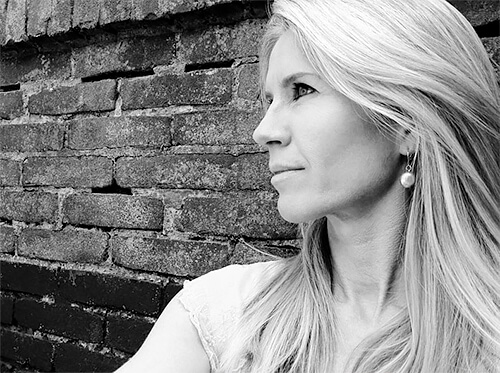Flokje van Lith (1969, Leiden, NL) studied photography at the Royal Academy of Arts, the Hague. Van Lith belongs to the first generation of artists to make full use of the newest Photoshop techniques. With apparent ease, she plays with the different realities that have developed independently of one another within the media of painting and photography. But appearance deceives; the making of the photograph is merely the first in a long line of decisions. The task of achieving the right result takes Van Lith weeks and sometimes months.
In her work she explores childhood and its underlying traumas and issues as well as the beauty of innocence and adolescence. The final results, complex portraits of children and young adults, not only have a very aesthetic quality but also seem to tell the story of the subject.The influences of the Flemish Primitives, which can be found in the serenity of the works, but also the personal experience of the artist, resonate from the artworks.
Van Lith won several awards for her work, such as the Silver Award (International Photography Awards), Silver Award (PX3 - Prix de la Photographie) and Third Place (Kontinent Awards). In addition her works have been exhibited at photo festivals nationally and internationally, such as Photo Festival Naarden and Photoville, New York.
Awards: Kontinent Awards: Third Place, Fine-Art/ Single Image/ Professional, International Photography Awards: 8 x Honorable Mention, Fine-Art/ Portrait/ Professional, Fine Art Photo Awards: Professional Nominee, Portrait/Professional, International Color Awards 2015: Honorable Mention, Portrait/ Professional - International Photography Awards 2014: Silver Award, Fine-Art/ Professional - PX3-Prix de la Photographie, Paris, 2014: Silver Award, Fine-Art/ Professional - International Photography Award 2014: 8 x Honorable Mention, Fine-Art/ Professional - New Dutch Photography Talent 2013 - International Photography Award 2013: 4 x Honorable Mention, Fine-Art/ Professional - Photography Masters Cup 2011: 4 x Honorable Mention, Fine-Art/ Professional - International Photography Award 2011: 7 x Honorable Mention, Fine-Art/ Professional.
Exhibitions: (Selection), 2015: Aqua Art Miami (USA), Art Fair COLOGNE (Germany), PAN Amsterdam, KunstRai, Rotterdam Contemporary Art Fair, LXRY (the Netherlands), 2014: Affordable Art Fair Hamburg (Germany), PAN Amsterdam, LXRY, Affordable Art Fair, Raw Art Fair, Realisme (the Netherlands), 2013: LXRY, PAN Amsterdam, Affordable Art Fair, (the Netherlands), 2012, Art Miami Context, Photoville New York, Art Wynwood (USA), PAN Amsterdam (the Netherlands), 2011: PAN Amsterdam, Photofestival Naarden (the Netherlands).
Publications: 2015: LXRY Magazine, PF Magazine, 2014: Art Photo Feature (USA), 2013: Gooi en Eemlander (the Netherlands) 2012: Volkskrant Magazine, De Telegraaf, Haarlems Dagblad (the Netherlands)
